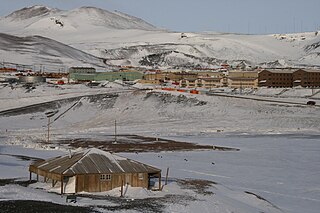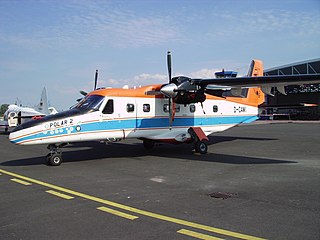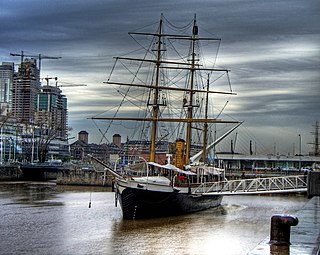 W
WThe air-tractor sledge was a converted fixed-wing aircraft taken on the 1911–1914 Australasian Antarctic Expedition, the first plane to be taken to the Antarctic.
 W
WAntarctic Conquest: the Story of the Ronne Expedition 1946-1948 is a 1949 science book by Norwegian-American Antarctic explorer Finn Ronne and science fiction writer L. Sprague de Camp, published in hardcover by G. P. Putnam's Sons. The role of de Camp, who was commissioned as a ghost writer to recast Ronne's manuscript into publishable form, is uncredited. Ronne's working title was reportedly "Conquering the Antarctic".
 W
WDiscovery Hut was built by Robert Falcon Scott during the Discovery Expedition of 1901–1904 in 1902 and is located at Hut Point on Ross Island by McMurdo Sound, Antarctica. Visitors to Antarctica, arriving at either the US Base at McMurdo or New Zealand's Scott Base are likely to encounter Discovery Hut as both are located on Hut Point. Discovery Hut is just 300m from McMurdo Base. The hut has been designated a Historic Site or Monument, following a proposal by New Zealand and the United Kingdom to the Antarctic Treaty Consultative Meeting.
 W
WThe first women to fly to Antarctica were the American flight attendants Patricia (Pat) Hepinstall of Holyoke, Colorado and Ruth Kelley of Houston, Texas who were members of the crew on the Pan American flight which landed at the US McMurdo Station on October 15, 1957.
 W
WIce People is a documentary film directed by Anne Aghion about the research of Allan Ashworth and Adam Lewis in Antarctica. Produced by Dry Valleys Productions, this 2008 film portrays the scientists discovering fossils from 13.9 million years ago. The film premiered at the San Francisco International Film Festival in April 2008 and was screened at the Jerusalem Film Festival in July 2008. This film aired on Sundance Channel in 2009.
 W
WThis list includes all the main Antarctic exploration ships that were employed in the seventeen expeditions that took place in the era between 1897 and 1922, known as the Heroic Age of Antarctic Exploration. A subsidiary list gives details of support and relief vessels that played significant roles in the expeditions they were commissioned to support.
 W
WNew South Greenland, sometimes known as Morrell's Land, was an appearance of land recorded by the American captain Benjamin Morrell of the schooner Wasp in March 1823, during a sealing and exploration voyage in the Weddell Sea area of Antarctica. Morrell provided precise coordinates and a description of a coastline which he claimed to have sailed along for more than 300 miles (480 km). Because the Weddell Sea area was so little visited and hard to navigate due to ice conditions, the alleged land was never properly investigated before its existence was emphatically disproved during Antarctic expeditions in the early 20th century.
 W
WPolar 3 was a Dornier Do 228 owned and operated by the Alfred Wegener Institute that was shot down south of Dakhla, Western Sahara by guerrillas of the Polisario Front on 24 February 1985.
 W
WQuail Island is an 81 ha uninhabited island within Lyttelton Harbour in the South Island of New Zealand, close to Christchurch. The island was given its European name by Captain William Mein Smith who saw native quail here in 1842; though they were already extinct by 1875. Ōtamahua means 'the place where children collect sea eggs'. Te Kawakawa refers to the pepper trees found on the island.
 W
WThe Scott Polar Research Institute (SPRI) is a centre for research into the polar regions and glaciology worldwide. It is a sub-department of the Department of Geography in the University of Cambridge, located on Lensfield Road in the south of Cambridge.
 W
WScott's Hut is a building located on the north shore of Cape Evans on Ross Island in Antarctica. It was erected in 1911 by the British Antarctic Expedition of 1910–1913 led by Robert Falcon Scott. In selecting a base of operations for the 1910–1913 Expedition, Scott rejected the notion of reoccupying the hut he had built by McMurdo Sound during the Discovery Expedition of 1901–1904.
 W
WThe second voyage of James Cook, from 1772 to 1775, commissioned by the British government with advice from the Royal Society, was designed to circumnavigate the globe as far south as possible to finally determine whether there was any great southern landmass, or Terra Australis. On his first voyage, Cook had demonstrated by circumnavigating New Zealand that it was not attached to a larger landmass to the south, and he charted almost the entire eastern coastline of Australia, yet Terra Australis was believed to lie further south. Alexander Dalrymple and others of the Royal Society still believed that this massive southern continent should exist. After a delay brought about by the botanist Joseph Banks' unreasonable demands, the ships Resolution and Adventure were fitted for the voyage and set sail for the Antarctic in July 1772.
 W
WThe drift of the Antarctic exploration vessel SY Aurora was an ordeal which lasted 312 days, affecting the Ross Sea party of Sir Ernest Shackleton's Imperial Trans-Antarctic Expedition, 1914–17. It began when the ship broke loose from its anchorage in McMurdo Sound in May 1915, during a gale. Caught in heavy pack ice and unable to manoeuvre, Aurora, with eighteen men aboard, was carried into the open waters of the Ross Sea and Southern Ocean, leaving ten men stranded ashore with meagre provisions.
 W
WThe corbeta (corvette) ARA Uruguay, built in England, is the largest ship afloat of its age in the Armada de la República Argentina, with more than 140 years passed since its commissioning in September 1874. The last of the legendary squadron of President Sarmiento, the Uruguay took part in revolutions, ransoms, expeditions, rescues, and was even floating headquarters of the Navy School. During its operational history 1874–1926 the Uruguay has served as a gunboat, school ship, expedition support ship, Antarctic rescue ship, fisheries base supply ship, and hydrographic survey vessel, and is now a museum ship in Buenos Aires. This ship may be the oldest in South America having been built in 1874 at Laird Bros. shipyard of Birkenhead, England, at a cost of £32,000. This ship is rigged to a barque sailplan. The ship's steel hull is sheathed in teak.
 W
WThe Western Base Party was a successful exploration party of the Australasian Antarctic Expedition. The eight-man Western Party was deposited by the SY Aurora on the Shackleton Ice Shelf at Queen Mary Land. The leader of the team was Frank Wild and the party included the geologist Charles Hoadley.